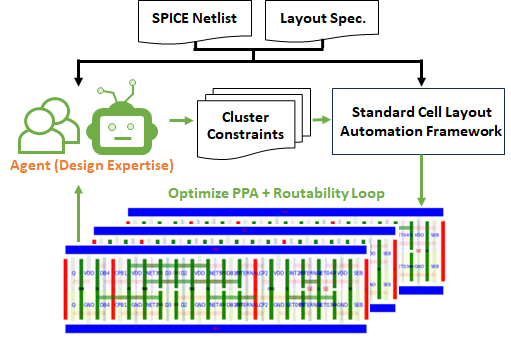Large Language Model (LLM) for Standard Cell Layout Design Optimization

Standard cells are essential components of modern digital circuit designs. With process technologies advancing toward 2nm, more routability issues have arisen due to the decreasing number of routing tracks, increasing number and complexity of design rules, and strict patterning rules. The state-of-the-art standard cell design automation framework is able to automatically design standard cell layouts in advanced nodes, but it is still struggling to generate highly competitive Performance-Power-Area (PPA) and routable cell layouts for complex sequential cell designs. Consequently, a novel and efficient methodology incorporating the expertise of experienced human designers to incrementally optimize the PPA of cell layouts is highly necessary and essential. High-quality device clustering, with consideration of netlist topology, diffusion sharing/break and routability in the layouts, can reduce complexity and assist in finding highly competitive PPA, and routable layouts faster. In this paper, we leverage the natural language and reasoning ability of Large Language Model (LLM) to generate high-quality cluster constraints incrementally to optimize the cell layout PPA and debug the routability with ReAct prompting. On a benchmark of sequential standard cells in 2nm, we demonstrate that the proposed method not only achieves up to 19.4% smaller cell area, but also generates 23.5% more LVS/DRC clean cell layouts than previous work. In summary, the proposed method not only successfully reduces cell area by 4.65% on average, but also is able to fix routability in the cell layout designs.
Publication Date
Uploaded Files
Award
Copyright
This material is posted here with permission of the IEEE. Internal or personal use of this material is permitted. However, permission to reprint/republish this material for advertising or promotional purposes or for creating new collective works for resale or redistribution must be obtained from the IEEE by writing to pubs-permissions@ieee.org.
